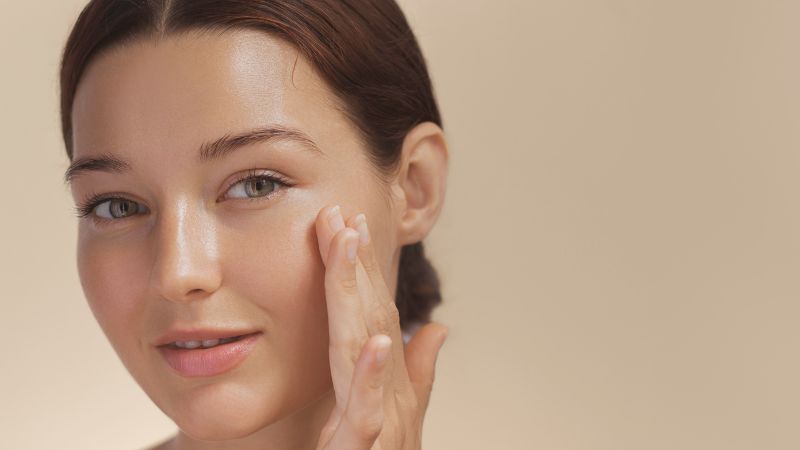
Moisturizing isn’t just a feel-good skincare step—it’s an essential function that protects your skin barrier, improves texture, and helps you retain skin hydration. While it may seem as simple as applying a cream, effective moisturizing is rooted in science. From understanding how moisture travels in and out of your skin to picking the right ingredients that lock it in, this guide breaks down what truly works.
In this deep dive, you’ll learn why your skin loses water, how moisturizers work, and which types of hydrators (yes, there are more than one!) suit your specific skin needs.
Why Skin Hydration Matters
Water is essential to skin health. Hydrated skin looks smoother, feels softer, and functions more effectively as a barrier. When hydration levels drop, you may experience:
- Dull or flaky skin
- Tightness or discomfort
- Fine lines appearing more prominent
- Increased sensitivity or irritation
Proper hydration also helps active ingredients penetrate more efficiently, making your entire routine work better.
How Moisture Moves Through Your Skin
Your skin naturally loses moisture throughout the day in a process called transepidermal water loss (TEWL). Environmental conditions (like wind, heat, and dry indoor air), harsh skincare, or a compromised barrier can speed this up.
That’s why good moisturizers don’t just add water—they help retain it, attract more of it, and seal it in.
The Three Pillars of Moisturizers: Humectants, Emollients, and Occlusives
Not all moisturizers are created equal. They work through different mechanisms, and the most effective ones combine three key ingredient categories:
1. Humectants – The Hydration Magnets
They draw moisture from the environment and deeper skin layers into the top layer of your skin.
🧴 Examples: Hyaluronic acid, glycerin, aloe vera, panthenol
🔬 Try This: Plumping Serum with 2% Hyaluronic Acid + B5
2. Emollients – The Texture Smoothers
They fill in micro-cracks in the skin, softening and making it feel smooth.
🧴 Examples: Squalane, fatty alcohols, ceramides, shea butter
🔬 Try This: Barrier-Repair Moisturizer with Ceramides and Squalane
3. Occlusives – The Moisture Sealants
These create a physical barrier on the skin to prevent water from evaporating.
🧴 Examples: Petrolatum, lanolin, beeswax, dimethicone
🔬 Try This: Overnight Recovery Balm with Petrolatum + Calendula
Skin Type Matters: Match the Moisturizer to the Skin
For Dry Skin:
- Needs humectants and occlusives
- Rich cream textures are best
- Look for ceramides, shea butter, hyaluronic acid
🧴 Try This: Deep Moisture Cream with Ceramides & Avocado Oil
For Oily or Acne-Prone Skin:
- Needs hydration without clogging pores
- Gel or lightweight emulsions are ideal
- Look for non-comedogenic ingredients like niacinamide and squalane
🧴 Try This: Oil-Free Moisturizer with Niacinamide and Zinc
For Combination Skin:
- Needs balanced hydration
- Use lightweight textures for the T-zone and richer cream on dry areas
🧴 Try This: Adaptive Gel-Cream Moisturizer
For Sensitive Skin:
- Needs barrier support and soothing ingredients
- Avoid strong fragrances and alcohols
- Look for oat extract, panthenol, centella asiatica
🧴 Try This: Calming Moisturizer with Centella + Madecassoside
When and How to Apply Moisturizer for Maximum Hydration
- Apply on damp skin (right after cleansing or misting) to trap in hydration.
- Use the “thin to thick” rule—serums first, creams last.
- Massage gently in upward strokes to aid absorption and circulation.
- At night, finish with an occlusive layer if your skin is dry or exposed to a dry environment.
Signs You Need to Upgrade Your Moisturizer
- Skin still feels tight after moisturizing
- Flakes or rough patches persist
- Makeup clings to dry spots
- You live in a dry climate or use indoor heating/cooling frequently
If you notice any of these signs, consider switching to a more barrier-focused moisturizer or adding a hydrating serum underneath.
Bonus Hydration Boosters
In addition to your daily moisturizer, these products can add hydration when needed:
- Hydrating Mist – Spritz throughout the day to refresh skin
- Sheet Masks – Great for a weekly hydration recharge
- Sleeping Masks – Lock in moisture overnight
- Hydration Ampoules/Boosters – Lightweight and concentrated, layered before cream
🧴 Try This: Hydration Ampoule with Snow Mushroom Extract
FAQs: Skin Hydration & Moisturizing
How often should I moisturize?
At least twice a day—morning and night. If your skin feels dry or tight midday, reapply as needed.
Can oily skin skip moisturizer?
No. Dehydrated oily skin can overcompensate with more oil. Use a lightweight, oil-free moisturizer to balance.
What’s the difference between hydrating and moisturizing?
Hydrating refers to adding water (via humectants), while moisturizing is about sealing in that hydration with emollients and occlusives.
Should I change moisturizers with the seasons?
Yes. In colder months, you may need richer creams. In summer, lighter gels may be more comfortable.
Does drinking more water help hydrate the skin?
It helps overall health but topical hydration is necessary for direct skin benefits.
Related Reads
- Skincare Basics: Build Your Best Routine from the Ground Up
- Morning vs. Night Skincare Routines (What to Use and When)
- Exfoliation Essentials: Physical vs. Chemical Methods Explained
Conclusion: Mastering Moisture Is Key to Healthy Skin
Hydrated skin is resilient, radiant, and healthier. By understanding the science behind moisturizers and tailoring your routine to your skin type and environment, you’ll set your skin up for long-term success.
Invest in quality products, apply them consistently, and listen to your skin’s needs. Hydration isn’t a trend—it’s a timeless foundation for skin health.
